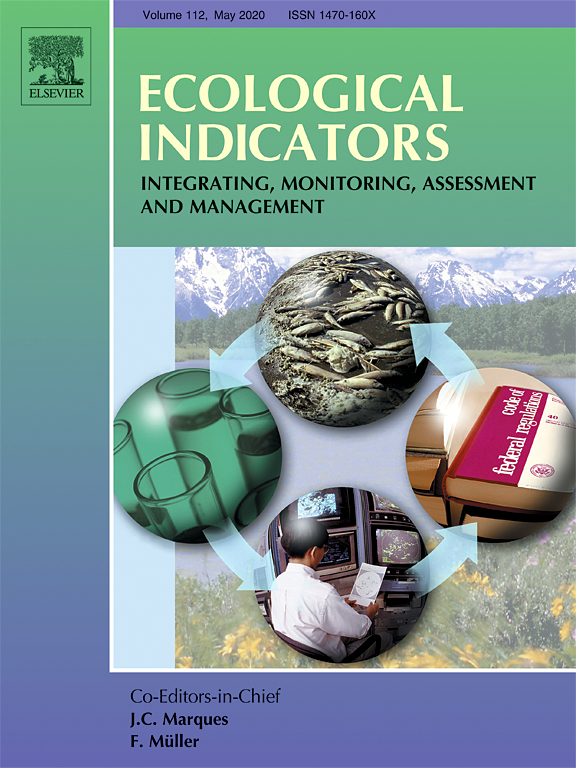Ver ítem
- xmlui.general.dspace_homeCentros Regionales y EEAsCentro Regional Santa FeEEA RafaelaArtículos científicosxmlui.ArtifactBrowser.ItemViewer.trail
- Inicio
- Centros Regionales y EEAs
- Centro Regional Santa Fe
- EEA Rafaela
- Artículos científicos
- Ver ítem
Building consensus on water use assessment of livestock production systems and supply chains: Outcome and recommendations from the FAO LEAP Partnership
Resumen
The FAO Livestock Environmental Assessment and Performance (LEAP) Partnership organised a Technical Advisory Group (TAG) to develop reference guidelines on water footprinting for livestock production systems and supply chains. The mandate of the TAG was to i) provide recommendations to monitor the environmental performance of feed and livestock supply chains over time so that progress towards improvement targets can be measured, ii) be applicable for feed
[ver mas...]
The FAO Livestock Environmental Assessment and Performance (LEAP) Partnership organised a Technical Advisory Group (TAG) to develop reference guidelines on water footprinting for livestock production systems and supply chains. The mandate of the TAG was to i) provide recommendations to monitor the environmental performance of feed and livestock supply chains over time so that progress towards improvement targets can be measured, ii) be applicable for feed and water demand of small ruminants, poultry, large ruminants and pig supply chains, iii) build on, and go beyond, the existing FAO LEAP guidelines and iv) pursue alignment with relevant international standards, specifically ISO 14040 (2006)/ISO 14044 (2006), and ISO 14046 (2014). The recommended guidelines on livestock water use address both impact assessment (water scarcity footprint as defined by ISO 14046, 2014) and water productivity (water use efficiency). While most aspects of livestock water use assessment have been proposed or discussed independently elsewhere, the TAG reviewed and connected these concepts and information in relation with each other and made recommendations towards comprehensive assessment of water use in livestock production systems and supply chains. The approaches to assess the quantity of water used for livestock systems are addressed and the specific assessment methods for water productivity and water scarcity are recommended. Water productivity assessment is further advanced by its quantification and reporting with fractions of green and blue water consumed. This allows the assessment of the environmental performance related to water use of a livestock-related system by assessing potential environmental impacts of anthropogenic water consumption (only “blue water”); as well as the assessment of overall water productivity of the system (including “green” and “blue water” consumption). A consistent combination of water productivity and water scarcity footprint metrics provides a complete picture both in terms of potential productivity improvements of the water consumption as well as minimizing potential environmental impacts related to water scarcity. This process resulted for the first time in an international consensus on water use assessment, including both the life-cycle assessment community with the water scarcity footprint and the water management community with water productivity metrics.
[Cerrar]

Autor
Boulay, Anne-Marie;
Drastig, Katrin;
Amanullah;
Chapagain, Ashok;
Charlon, Veronica;
Civit, Bárbara María;
DeCamillis, Camillo;
Souza, Marlos De;
Hess, Tim;
Hoekstra, Arjen Y.;
Ibidhi, Ridha;
Lathuillière, Michael J.;
Manzardo, Alessandro;
McAllister, Tim;
Morales, Ricardo A.;
Motoshita, Masaharu;
Palhares, Julio Cesar Pascale;
Pirlo, Giacomo;
Ridoutt, Brad;
Russo, Valentina;
Salmoral, Gloria;
Singh, Ranvir;
Vanham, Davy;
Wiedemann, Stephen;
Weichao, Zheng;
Pfister, Stephan;
Fuente
Ecological Indicators 124 : 107391 (May 2021)
Fecha
2021-05
Editorial
Elsevier
ISSN
1470-160X
Formato
pdf
Tipo de documento
artículo
Palabras Claves
Derechos de acceso
Abierto
 Excepto donde se diga explicitamente, este item se publica bajo la siguiente descripción: Creative Commons Attribution-NonCommercial-ShareAlike 2.5 Unported (CC BY-NC-SA 2.5)
Excepto donde se diga explicitamente, este item se publica bajo la siguiente descripción: Creative Commons Attribution-NonCommercial-ShareAlike 2.5 Unported (CC BY-NC-SA 2.5)


